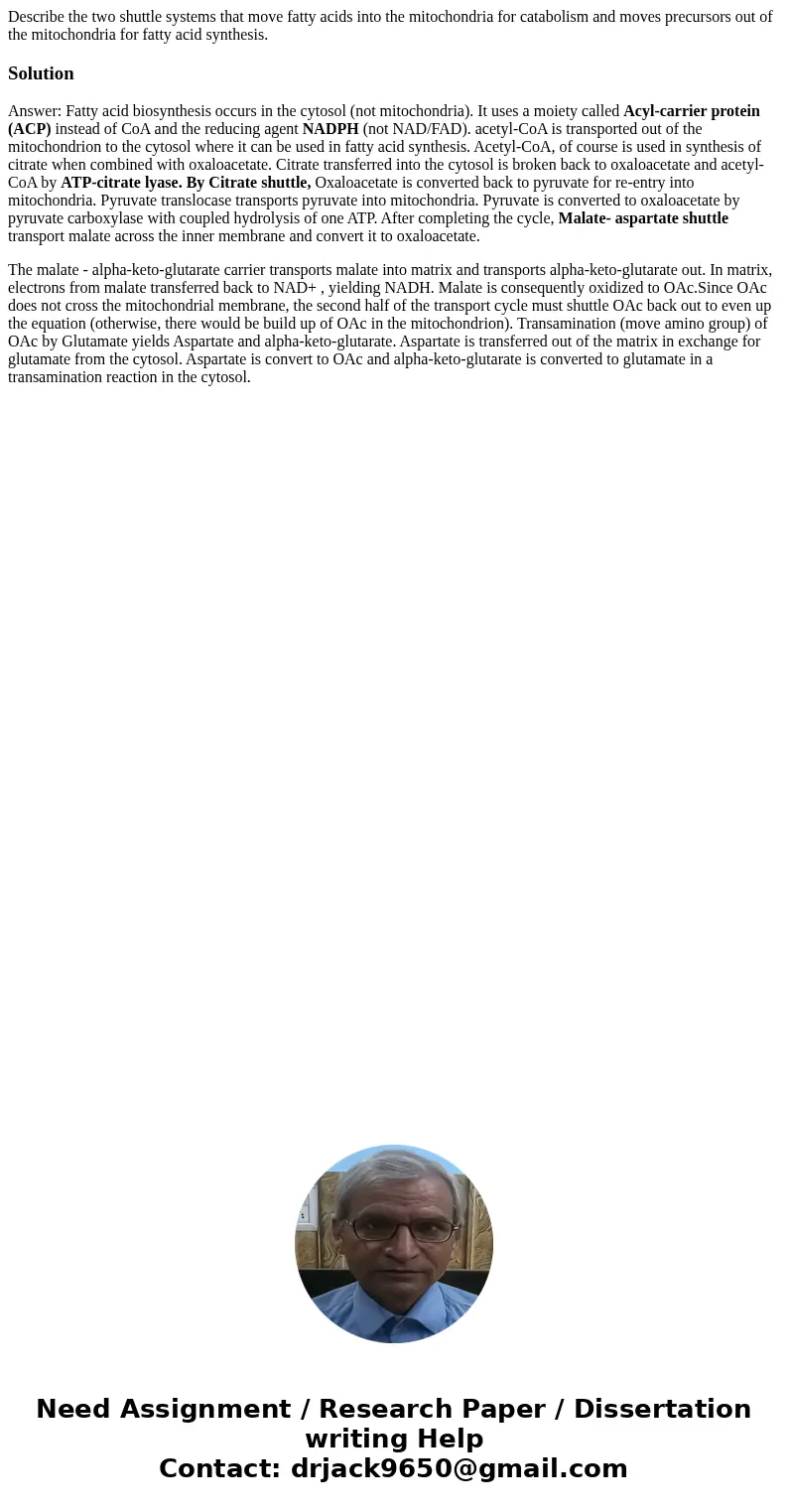Describe the two shuttle systems that move fatty acids into
Describe the two shuttle systems that move fatty acids into the mitochondria for catabolism and moves precursors out of the mitochondria for fatty acid synthesis.
Solution
Answer: Fatty acid biosynthesis occurs in the cytosol (not mitochondria). It uses a moiety called Acyl-carrier protein (ACP) instead of CoA and the reducing agent NADPH (not NAD/FAD). acetyl-CoA is transported out of the mitochondrion to the cytosol where it can be used in fatty acid synthesis. Acetyl-CoA, of course is used in synthesis of citrate when combined with oxaloacetate. Citrate transferred into the cytosol is broken back to oxaloacetate and acetyl-CoA by ATP-citrate lyase. By Citrate shuttle, Oxaloacetate is converted back to pyruvate for re-entry into mitochondria. Pyruvate translocase transports pyruvate into mitochondria. Pyruvate is converted to oxaloacetate by pyruvate carboxylase with coupled hydrolysis of one ATP. After completing the cycle, Malate- aspartate shuttle transport malate across the inner membrane and convert it to oxaloacetate.
The malate - alpha-keto-glutarate carrier transports malate into matrix and transports alpha-keto-glutarate out. In matrix, electrons from malate transferred back to NAD+ , yielding NADH. Malate is consequently oxidized to OAc.Since OAc does not cross the mitochondrial membrane, the second half of the transport cycle must shuttle OAc back out to even up the equation (otherwise, there would be build up of OAc in the mitochondrion). Transamination (move amino group) of OAc by Glutamate yields Aspartate and alpha-keto-glutarate. Aspartate is transferred out of the matrix in exchange for glutamate from the cytosol. Aspartate is convert to OAc and alpha-keto-glutarate is converted to glutamate in a transamination reaction in the cytosol.

 Homework Sourse
Homework Sourse